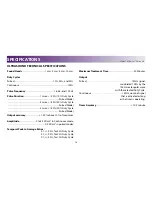
12
Intelect® Mobile Ultrasound
Preventing Overheating of the Sound Heads
To prevent the sound head from becoming overheated, do the
following:
•
Check to be sure proper contact is being made throughout the
treatment.
•
When treating in water, make sure that the sound head is
completely under water.
•
For direct coupling, you may need to apply more conductive gel
or lotion during the treatment to achieve better coupling.
•
You can also reduce the power or duty cycle during the
treatment if you are treating an area where it is difficult to obtain
good coupling.
Preventing Adverse Effects
Perform the following procedures to avoid the negative effects of
ultrasound therapy.
Sound Head Movement
If movement of the sound head is too slow, the patient may feel
periosteal pain characterized by a deep ache or pain. If motion is
too fast, or if the sound head does not maintain good contact with
the skin, the therapeutic effect of the sound waves will be reduced
and the sound head may overheat.
Patient Susceptibility
Some patients are more sensitive to ultrasound output and may
experience a reaction similar to a heat rash. Be sure to inspect the
treatment area during and following treatment, and discontinue if
an adverse reaction does occur.
Output Power
Choose a lower watt setting to reduce output or select a pulsed
duty cycle. Higher output levels have a greater potential for patient
discomfort.
Coupling
Coupling is described as contact between the sound head and
the treatment site and may be accomplished through the use of a
coupling agent, such as gel, lotion or water (underwater treatments
only). Anything used as a coupling agent must be highly
conductive. Air is a very poor conductor of ultrasonic waves.
Head Max . Temp . Disclaimer
Head Max. Temp. is for the protection of the equipment, not for the
protection of the patient.
ABOUT ULTRASOUND THERAPY
















































